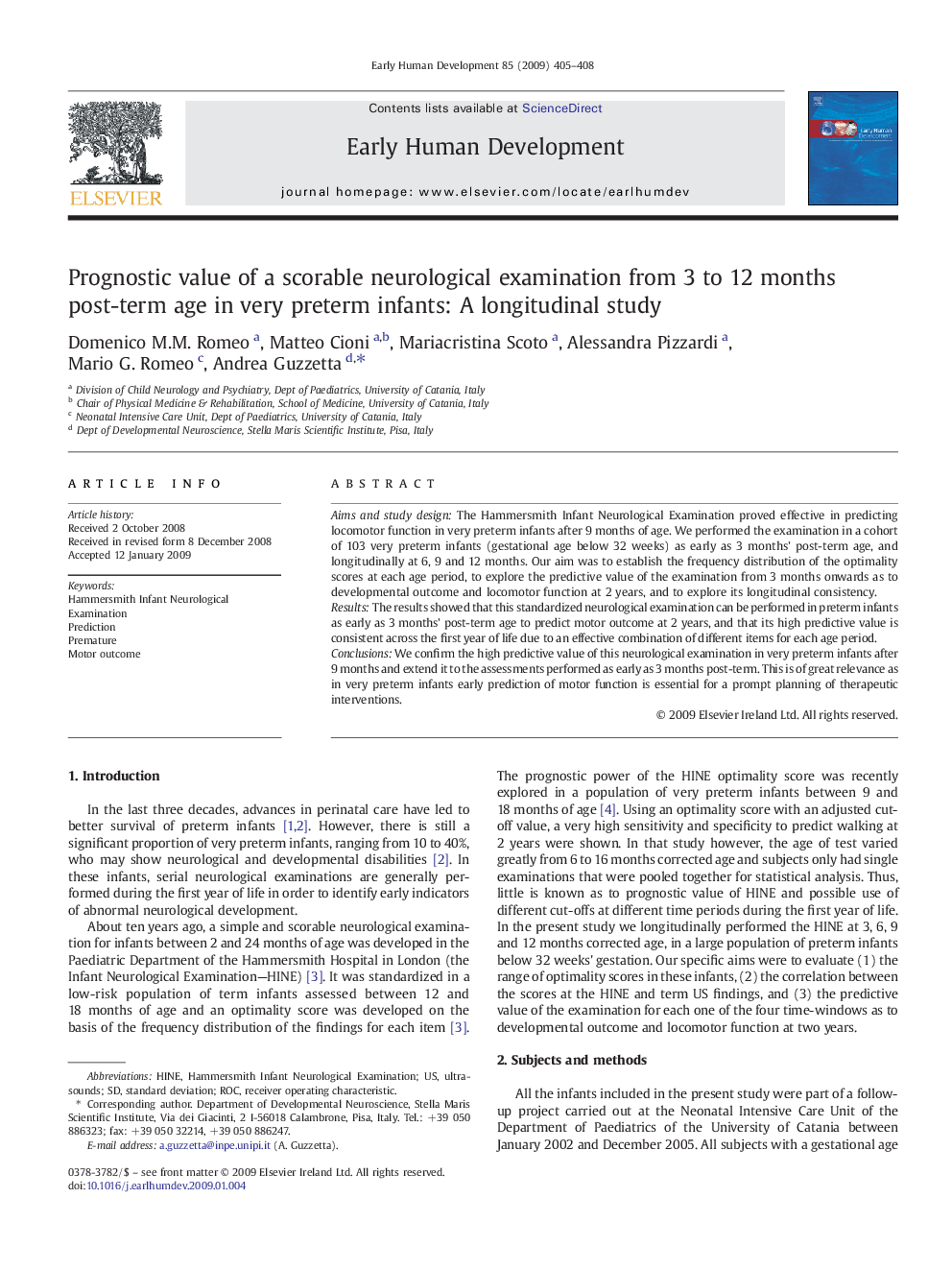| Article ID | Journal | Published Year | Pages | File Type |
|---|---|---|---|---|
| 3917546 | Early Human Development | 2009 | 4 Pages |
Aims and study designThe Hammersmith Infant Neurological Examination proved effective in predicting locomotor function in very preterm infants after 9 months of age. We performed the examination in a cohort of 103 very preterm infants (gestational age below 32 weeks) as early as 3 months' post-term age, and longitudinally at 6, 9 and 12 months. Our aim was to establish the frequency distribution of the optimality scores at each age period, to explore the predictive value of the examination from 3 months onwards as to developmental outcome and locomotor function at 2 years, and to explore its longitudinal consistency.ResultsThe results showed that this standardized neurological examination can be performed in preterm infants as early as 3 months' post-term age to predict motor outcome at 2 years, and that its high predictive value is consistent across the first year of life due to an effective combination of different items for each age period.ConclusionsWe confirm the high predictive value of this neurological examination in very preterm infants after 9 months and extend it to the assessments performed as early as 3 months post-term. This is of great relevance as in very preterm infants early prediction of motor function is essential for a prompt planning of therapeutic interventions.
